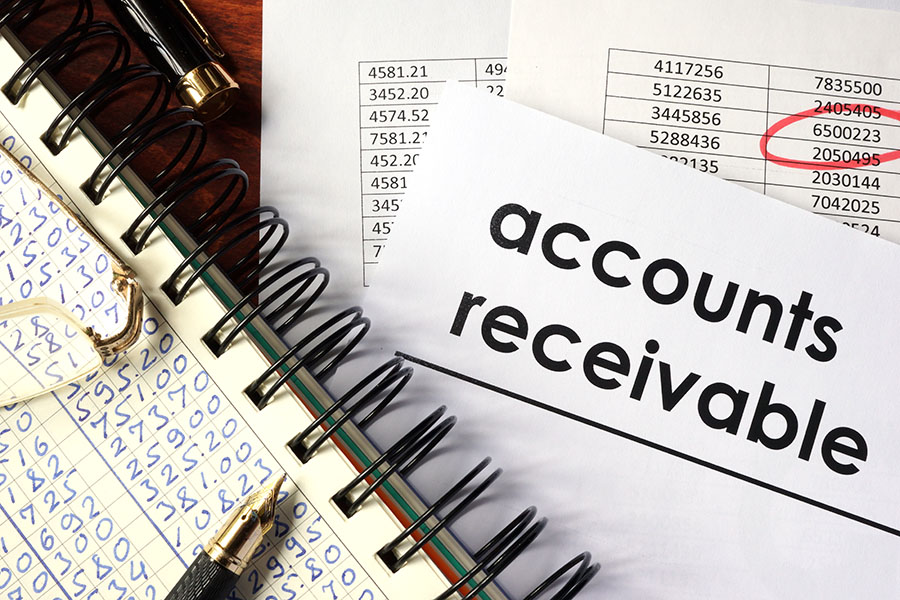The main difference between accounts payable vs accounts receivable is whether the money is flowing in or out of your business. Whereas in A/R, we track the money owed to us by our customers, in A/P, we track the money we owe to our suppliers. In other words, the seller records the invoice as A/R, while the buyer records the invoice as A/P.
Both accounting entries are part of double-entry bookkeeping. They are very similar in how they are recorded, with A/P being a liability account and A/R being an asset account.
Accounts Receivable | Accounts Payable | |
|---|---|---|
Purpose |
|
|
Balance Sheet Entry |
|
|
Management |
|
|
Reporting |
|
|
Impact on Cash Flow |
|
|
Examples |
|
|
How Accounts Payable vs Accounts Receivable Works
A/P and A/R are like opposite sides of a coin in a business transaction, and effectively managing both is crucial for a company’s cash flow. The A/P and A/R processes are the workflows businesses use to manage incoming and outgoing cash flow.
Here’s a breakdown of how they work:
Accounts Payable Process
- Receive goods or services: The business orders goods or services from a supplier, and upon delivery, the supplier sends an invoice that includes the amount owed and the due date, which is generally between 30 and 60 days.
- Record the invoice: The company records the invoice in the accounts payable ledger. This entry increases the accounts payable liability on the balance sheet.
- Verify invoice details: If applicable, the company verifies the invoice details against the purchase order and the delivery note to ensure accuracy.
- Approve invoice payment: The invoice is approved for payment by the relevant department or manager.
- Make payment: The company schedules the payment according to the agreed payment terms with the supplier. When the payment is made, the accounts payable account is decreased as is the cash or bank account from which the payment is made.
Accounts Receivable Process
- Provide goods or services: The company delivers goods or services to a customer. An invoice is issued, detailing the amount owed and payment terms.
- Record the invoice: The invoice is recorded in the accounts receivable ledger. This entry increases the accounts receivable asset on the balance sheet.
- Bill customer: The company sends the invoice to the customer.
- Collect payment: If necessary, the company follows up with the customer to ensure timely payment. This may involve sending reminders or contacting the customer directly.
- Receive payment in the accounting ledger: When the customer pays, the accounts receivable account is decreased, and cash or bank accounts where the payment is deposited are increased.
Our related resources:
Common Use Cases of Accounts Payable vs Accounts Receivable Systems
A/P keeps track of money your business owes suppliers for everyday purchases on credit, like inventory, while A/R manages money owed to you by customers who purchase on credit. The goal is to collect those payments quickly to improve cash flow.
When to Use an A/P System
When a business manages its A/P effectively, it can streamline financial processes and help manage cash flow. This can result in a significant competitive advantage through improved financial control, stronger supplier relationships, and optimized cash flow.
Following are some common use cases for a strong A/P system:
- Ensuring timely payments and early discounts: An efficient A/P system helps you process bills quickly, which guarantees on-time payments to vendors. This also helps strengthen supplier relationships and may qualify you for early payment discounts offered by some vendors.
- Streamlining invoice processing: If you automate your invoice processing with accounting software or tools like optical character recognition (OCR), it can significantly reduce manual data entry, which minimizes errors.
- Enhancing regulatory compliance: Maintaining proper records and audit trails for bills becomes easier with an automated A/P system. This simplifies the process of adhering to tax regulations and internal financial controls.
- Improving decision-making: The data and insights generated from an A/P system can empower informed financial decisions regarding payment terms, supplier selection, and cash flow management strategies.
- Supporting scalability and growth: As your business grows, a robust A/P system can handle increasing invoice volume and complexity, ensuring smooth financial operations during periods of expansion.
Our related resources:
- Common Invoice Payment Terms and Tips on Setting Them
- Cash Flow Management Tips for Small Businesses
- Best Accounts Payable Software
When to Use an A/R System
A/R plays an important role in businesses that extend credit to their customers. By effectively managing it, businesses can ensure timely customer payments, manage cash flow, and make data-driven decisions to strengthen financial health.
Here are a few ways an efficient A/R system can help your business:
- Receiving faster collections and improving cash flow: An efficient A/R system helps you track outstanding invoices, identify overdue payments, and send timely reminders. This accelerates the collection process and improves your cash flow, ensuring you have enough funds for daily operations and growth.
- Managing credit risk and customer segmentation: A/R data allows you to analyze customer payment history and creditworthiness. This helps to set appropriate credit limits, identify high-risk customers, and offer targeted discounts or payment terms to different customer segments.
- Streamlining invoice delivery and payment options: Modern A/R systems can automate invoice delivery via email or online portals. Integrating an online payment gateway allows customers to pay electronically, speeding up the collection process and reducing reliance on paper checks.
- Improving debt collection: A/R systems can automate late payment reminders and escalate overdue accounts to a collection agency if necessary. This improves the debt collection process and helps to recover outstanding balances.
- Managing inventory and sales forecasting: A/R data provides insights into sales trends and customer demand. This information can be used to improve inventory management, forecast sales more accurately, and avoid a stockout or overstocking.
Our related resources:
- How to Ask for Payment in an Email [+3 Professional Email Templates]
- How to Make Collection Calls (Script + Tips)
- How to Track Invoices Using Excel [+Free Template]
- Best Invoicing Software for Small Businesses
Examples of Accounts Payable vs Accounts Receivable
While A/P represents your company’s short-term obligations, A/R represents money owed to your business by customers. Here are some examples to illustrate the difference between accounts payable and accounts receivable:
Accounts Payable Example
- Office supplies: Your company purchases office supplies from a vendor for $1,000 with payment terms of net 30 days. This means you have 30 days to pay the invoice in full. In this scenario, $1,000 would be recorded in your A/P ledger.
- Professional services: You hire a marketing consultant for a monthly retainer of $5,000. At the end of the month, you receive an invoice for $5,000, which must be paid before the due date. This $5,000 would be reflected as accounts payable.
- Utilities: The utility company sends you a bill for $200, which represents the electricity you used last month. It is due in 15 days, so the $200 will be recorded in accounts payable until you make the payment.
Accounts Receivable Example
- Project fees: You run a graphic design business and complete a design project for a client. The total project cost is $2,500 and the client agrees to pay within 60 days after the project is completed. You would record $2,500 in your A/R ledger to reflect the amount your client owes.
- Product sales: You own a clothing store and a customer purchases a new jacket for $150. The customer decides to pay on credit and agrees to pay the invoice at the end of the month. The $150 would be recorded in your A/R ledger until the customer pays.
- Services rendered: Your company provides landscaping services to a local business. The monthly invoice is $750 and the terms are net 15, meaning the payment is due in 15 days. This $750 will be recorded in your accounts receivable until you receive the payment.
Frequently Asked Questions (FAQs)
The main difference lies in who owes whom. Whereas accounts payable is money the business owes to suppliers for goods or services purchased on credit, accounts receivable is money that customers owe a business for goods or services delivered on credit.
Accounts payable is shown as a liability on the balance sheet because it represents an obligation to pay cash in the future. Meanwhile, accounts receivable is considered a current asset on the balance sheet because it represents cash you expect to receive within a specified period.
Neither extreme is ideal. A high accounts payable balance can improve your cash flow in the short term, but it can affect your creditworthiness with suppliers if not managed well. On the other hand, a high accounts receivable balance indicates money owed to you but not yet received, which can strain your cash flow.
Accounts payable and notes payable are both liabilities, but they differ in a few ways. Accounts payable arises from everyday business purchases made on credit from suppliers. Unlike with notes payable, there’s usually no formal written agreement, just an understanding of the payment terms.
Notes payable is often used to finance significant purchases, such as equipment or property. It often involves a promissory note issued by your company to the lender that acknowledges the debt and outlines repayment terms including the interest rate and maturity date. For more information, see our notes payable vs accounts payable comparison.
Bottom Line
A/P represents your obligation to suppliers, while A/R reflects the money that customers owe you. Both are crucial for maintaining healthy cash flow and financial well-being. If you’re able to manage these accounts effectively, you’ll be able to streamline your payment cycles, strengthen supplier relationships, and ensure a steady stream of incoming funds.


